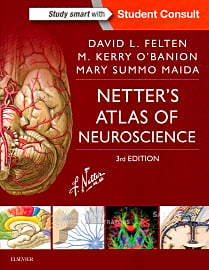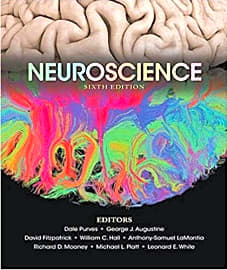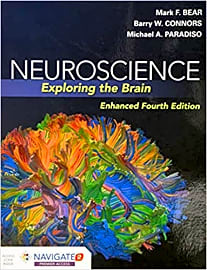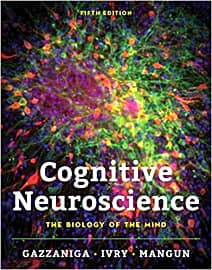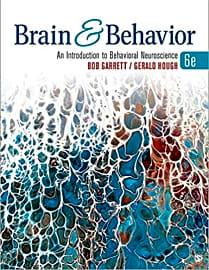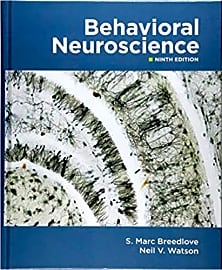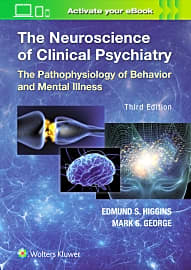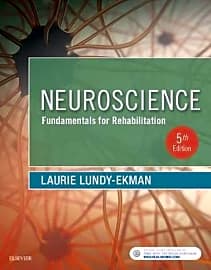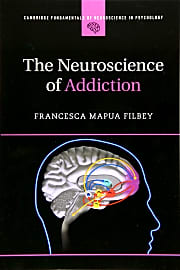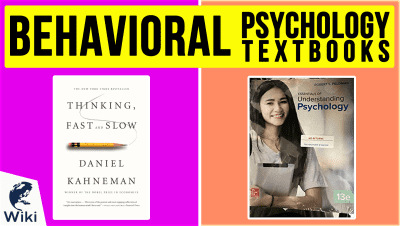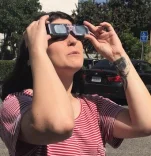The 10 Best Neuroscience Textbooks


This wiki has been updated 36 times since it was first published in July of 2018. Anyone looking to pursue a career plumbing the depths of the human psyche should start with one of these neuroscience textbooks. Filled with useful illustrations, handy vocabulary lists, and up-to-date information, they provide an in-depth look at the way our brains function. Everything from basic biology to the roles played by genes and chemicals gets put under the microscope. When users buy our independently chosen editorial picks, we may earn commissions to help fund the Wiki.
Editor's Notes
November 03, 2020:
This field moves fast, which is something we kept top of mind during our most recent update, prioritizing texts that are only a few years old or else freshly revised. That includes Neuroscience: Exploring the Brain in an enhanced fourth edition and Behavioral Neuroscience, now in its ninth iteration.
We were pleased to see that Principles of Neural Science is getting an update for the first time in several years, something that this hefty tome was long overdue for. At close to 2,000 pages, this incredibly comprehensive option now has highly detailed information on stroke, Parkinson’s, and MS, a new chapter on spatial memory, new images, and streamlined chapters and contributors. One of the only books we kept around despite getting a little old was Netter's Atlas of Neuroscience, as it's more helpful than any brain model out there, is still widely useful, and very budget-friendly.
While Basic Clinical Neuroscience remains a helpful text for medical students, it's more than a few years old at this point and a little too simplistic for many student's needs. We thought we'd take the opportunity to bring on something more specialized with The Neuroscience of Addiction, which works to fill a void left by many other texts. While it only offers a basic foundation and familiarity with the subject, this is intended so that it can be helpful for policymakers, laypeople, and non-scientists who could use the information but don't want to get mired in heady material.
We also brought on Brain & Behavior to replace Foundations of Behavioral Neuroscience. Brain & Behavior is extremely student-oriented and strives to be as engaging as possible, in which it succeeds for many. It makes the material relatable to everyday life and generously peppers in recent research, current events, case studies, and more.
December 11, 2019:
We wanted this list to showcase some of the most relied-upon, lauded volumes in the field, with selections written by scholars and experts that are capable of enlightening beginners and advanced students alike. We updated Cognitive Neuroscience to reflect its most recent edition, as well as introduced the 10th edition of Foundations of Behavioral Neuroscience. This text is only available in loose-leaf format, however, so consider opting for the 9th edition if you'd prefer a hardcover copy.
For those who are studying behavioral psychology, books like Behavioral Neuroscience, The Neuroscience of Clinical Psychiatry and Cognitive Neuroscience should prove useful. Undergrads will appreciate Neuroscience: Exploring the Brain and Neuroscience: 6th Edition, both selections that are written in an easily digestible manner and shouldn't overwhelm. And while The Principles of Neural Science remains a top choice and is often referred to as the bible of neuroscience, we think it's likely too heady for students who are struggling to understand concepts, autodidacts, or those who are just beginning to study the discipline.
We added Basic Clinical Neuroscience for students in medical school. It covers anatomy and neurophysiology and makes helpful connections between basic physiology and pathophysiology. Remember that it is written for the clinical perspective, so it may not be helpful for those who need a basic overview.
Special Honors
LoveNeuro Designed by a student for fellow learners, LoveNeuro provides a gentle introduction to neuroscience. It allows you to learn, revise, watch, and draw the human nervous system in an exciting and easy-to-understand way. It features a variety of useful resources to help you learn and remember complex material, with notes, diagrams, quizzes, video tutorials, interactive exercises, and more. thegoofyanatomist.com
Beautiful Brain: The Drawings of Santiago Ramon y Cajal Not exactly a textbook, Beautiful Brain straddles the line between art and science and is an inspiring and enlightening text for budding and professional neuroscientists alike. It showcases the work of famed neuroscientist and artist Santiago Ramón y Cajal, presenting a selection of his drawings of brain cells, brain regions, and neural circuits with descriptive commentary. The sketches are explored from the perspectives of leading figures in contemporary neuroscience. abramsbooks.com
The Society for Neuroscience Headquartered in Washington, DC, the Society for Neuroscience has over 36,000 members in 95 countries. They offer year-round programming that includes two highly regarded scientific journals, professional development resources and career training, science advocacy and public outreach, and more. Members benefit from the exchange of scientific research, in-person and online programming, and a global community of like minds. sfn.org
A Brief History Of Neuroscience
Within the next 100 years, one can only imagine what we’ll know.
The question of where consciousness comes from has engaged great thinkers in debate since antiquity. The Greek philosopher and scientist Aristotle, along with many Egyptians, believed that the heart was the source of our consciousness, memory, intelligence, and imagination. In the Book of the Dead, a funerary text consisting of magic spells intended to help the deceased navigate the underworld, priests recommended carefully preserving the heart of a mummy. The brain, however, didn't get the same star treatment — the texts endorsed scooping it out and throwing it away.
That's not to say that Egyptians weren't studying the brain and how our nervous system works. Manuscripts dating back to 1700 B.C.E. indicate that ancient physicians were aware of multiple types of brain injuries and even had treatment recommendations for them. Still, they considered our grey matter to be of minor importance.
The idea that the heart was the seat of consciousness prevailed until Greek physician Hippocrates made the deduction that since our eyes, mouth, nose, and ears are near the brain, it must have something to do with how we perceive the world around us. Further progress was made when a Roman physician named Galen realized that his gladiator patients lost their mental faculties after suffering injuries that damaged their brains.
Over the next few hundred years, various physicians, chemists, surgeons, and philosophers would continue to chip away at our ignorance regarding neuroscience. Influential scholars like Maimonides, Avicenna, Avenzoar, and many others in the Medieval Muslim world described medical problems that had to do with the brain, while luminaries like Rene Descartes made further contributions to the field during the Renaissance in Europe.
The discipline received a push in the right direction in 1780 thanks to Luigi Galvani. One day, Galvani was experimenting with static electricity by rubbing skin from a dead frog. When a charged metal scalpel touched the frog's exposed sciatic nerve, its leg jumped as though it was alive. After that, people began to realize that electricity might play a role in how our bodies work.
Neuroscience was fast-tracked as pioneering research emerged over the following centuries. Thanks to parallel advances in molecular biology and electrophysiology, researchers were better able to study many aspects of the nervous system, like how it's structured, operates, changes, and malfunctions.
These days, our understanding is growing at a remarkable rate, but scientists acknowledge that formidable challenges lay ahead. Within the next 100 years, one can only imagine what we’ll know.
What Should You Expect From A Neuroscience Textbook?
Neuroscience is a multidisciplinary branch of biology that incorporates everything from anatomy and psychology to cytology, so naturally, textbooks can vary from one another quite a bit. For instance, if you’re looking to learn about mental disorders, you might benefit from a volume with a focus on psychiatry. Students and autodidacts who need to gain a broad understanding of the discipline will requite gentle introductions into the field, while others might want texts that focus on examples from animals and humans.
On top of that, you should be willing to spend a substantial amount of time staying abreast of breaking news in the field.
Regardless of the type of book you end up choosing, be sure to opt for the most updated version available. On top of that, you should be willing to spend a substantial amount of time staying abreast of breaking news in the field. Neuroscience is a rapidly advancing discipline, with the pace of discoveries often outstripping what gets printed in a textbook. Many researchers will tell you that they rely on peer-reviewed publications just as much as traditional textbooks.
Now, that’s not to say that a textbook cannot still provide you with invaluable information. If you’re just breaking into neuroscience, the right volume can enlighten you on complex structures, vital vocabulary, famous experiments, and much more. You can expect an introductory tome to explain everything from the basic anatomy of the brain and what synapses are to how we develop certain behaviors.
Neuroscience is a subject that requires copious visuals to enhance understanding, so choose a text with an abundance of graphs, photos, illustrations, diagrams, and reconstructions. Additionally, a thorough book will incorporate research papers, real-life case studies, and online resources to round it out.
Just like with any other textbook, authors should be deploying useful pedagogical features to help students learn. Things like chapter summaries, bolded vocabulary, extensive indexes, and thoughtful questions go a long way in helping readers understand the material.
Open Up Your Mind
If you're a student who's toying with the idea of studying neuroscience, know that an entirely new world is about to open up to you, should you chose to move forward with it. It's a fascinating branch of study that requires practitioners to plumb the depths of the mind and question reality as they know it. If you choose to be a researcher, you'll likely end up working on some truly compelling studies.
After, they analyzed their resting brain states and looked for evidence that more activity occurred in either the right or left side.
For example, you've probably heard that creative people are right-brained, while being left-brained is a hallmark of analytical types and math lovers. The idea is that depending on your personality type, one half of your brain works harder than the other. While the evidence for this theory has always been pretty weak, researchers put it to bed by scanning the brains of one thousand people. They directed each participant to relax and think about nothing in particular for five to ten minutes. After, they analyzed their resting brain states and looked for evidence that more activity occurred in either the right or left side.
The results? No patterns were found that indicated that one network was more strongly connected in certain people. While some functions are biased toward one hemisphere of the brain, like language processing is towards the left, there didn't seem to be any tangible connection to our personalities.
So, if you happen to be great with numbers and have a logical way of thinking about things, don't attribute it to just one hardworking portion of your grey matter. You're also not doomed to never be a painter or musician, either. Your entire brain is responsible for your traits and functions, with the left and right sides working together, so there's no need to talk about creativity and logic as though they're mutually exclusive. Thankfully, it's entirely possible to have both skills in spades.


